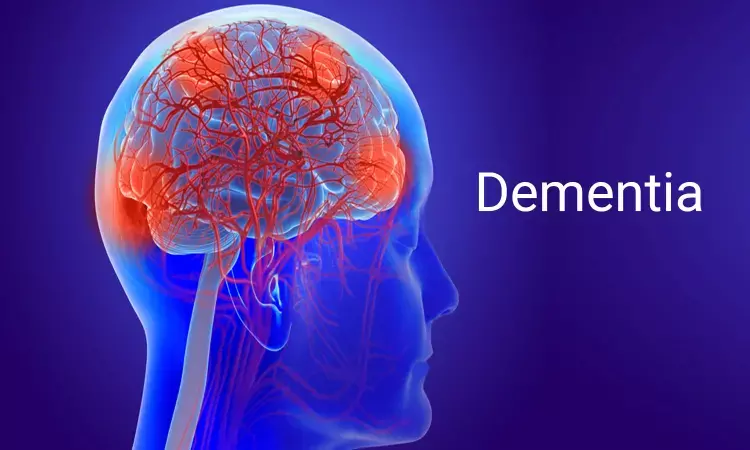- Home
- Medical news & Guidelines
- Anesthesiology
- Cardiology and CTVS
- Critical Care
- Dentistry
- Dermatology
- Diabetes and Endocrinology
- ENT
- Gastroenterology
- Medicine
- Nephrology
- Neurology
- Obstretics-Gynaecology
- Oncology
- Ophthalmology
- Orthopaedics
- Pediatrics-Neonatology
- Psychiatry
- Pulmonology
- Radiology
- Surgery
- Urology
- Laboratory Medicine
- Diet
- Nursing
- Paramedical
- Physiotherapy
- Health news
- Fact Check
- Bone Health Fact Check
- Brain Health Fact Check
- Cancer Related Fact Check
- Child Care Fact Check
- Dental and oral health fact check
- Diabetes and metabolic health fact check
- Diet and Nutrition Fact Check
- Eye and ENT Care Fact Check
- Fitness fact check
- Gut health fact check
- Heart health fact check
- Kidney health fact check
- Medical education fact check
- Men's health fact check
- Respiratory fact check
- Skin and hair care fact check
- Vaccine and Immunization fact check
- Women's health fact check
- AYUSH
- State News
- Andaman and Nicobar Islands
- Andhra Pradesh
- Arunachal Pradesh
- Assam
- Bihar
- Chandigarh
- Chattisgarh
- Dadra and Nagar Haveli
- Daman and Diu
- Delhi
- Goa
- Gujarat
- Haryana
- Himachal Pradesh
- Jammu & Kashmir
- Jharkhand
- Karnataka
- Kerala
- Ladakh
- Lakshadweep
- Madhya Pradesh
- Maharashtra
- Manipur
- Meghalaya
- Mizoram
- Nagaland
- Odisha
- Puducherry
- Punjab
- Rajasthan
- Sikkim
- Tamil Nadu
- Telangana
- Tripura
- Uttar Pradesh
- Uttrakhand
- West Bengal
- Medical Education
- Industry
Large Perivascular Spaces may predict dementia risk

Perivascular spaces are involved in clearing waste and toxins from the brain and may be associated with the brain changes associated with aging.
The study involved 414 people with an average age of 80. Participants took cognitive tests of thinking and memory skills and were assessed for the presence of dementia at the beginning of the study and every two years for eight years. The participants had MRI brain scans to check for enlarged perivascular spaces in two key areas of the brain at the start of the study and then every two years for eight years. The top quarter of the people with the largest number of enlarged perivascular spaces, designated as severe cases, were compared to those with fewer or no enlarged spaces.
"Severe perivascular space disease may be a marker for an increased risk of cognitive decline and dementia," said study author Matthew Paradise, MB.Ch.B., M.Sc., of the University of New South Wales in Sydney, Australia. "More research is needed to understand how these enlarged spaces develop, as they could be an important potential biomarker to help with early diagnosis of dementia."
Researchers found that people with the largest number of enlarged perivascular spaces in both areas of the brain were nearly three times more likely to develop dementia during the study than people with fewer or no enlarged spaces.
A total of 97 people, or 24%, were diagnosed with dementia during the study. Of the 31 people with severe cases in both areas of the brain, 12 people, or 39%, were diagnosed with dementia.
The people with severe enlargement of perivascular spaces in both areas of the brain were also more likely to have greater decline four years later on their overall scores of cognition than the people with mild or absent enlargement of spaces.
The results persisted after researchers adjusted for other factors that could affect either scores on tests or the development of dementia, such as age, high blood pressure and diabetes. The researchers also took into account other signs of disease in the small blood vessels in the brain, which can also be a sign of risk of dementia.
"These results suggest that there is an independent mechanism for the perivascular spaces as a biomarker of cognitive impairment and dementia apart from being a general marker of disease in the small vessels," Paradise said. "For example, enlarged perivascular spaces may be a biomarker of impaired waste clearance in the brain."
Paradise noted that the study does not prove that enlarged perivascular spaces cause these thinking and memory problems over time; it only shows an association.
Limitations of the study include that cognitive test data was only available over four years and that imaging data could have missed some enlarged perivascular spaces in the brain.
The study was supported by the Australian National Health and Medical Research Council and the Josh Woolfson Memorial Scholarship.
https://n.neurology.org/content/early/2021/01/27/WNL.0000000000011537
Hina Zahid Joined Medical Dialogue in 2017 with a passion to work as a Reporter. She coordinates with various national and international journals and association and covers all the stories related to Medical guidelines, Medical Journals, rare medical surgeries as well as all the updates in the medical field. Email: editorial@medicaldialogues.in. Contact no. 011-43720751
Dr Kamal Kant Kohli-MBBS, DTCD- a chest specialist with more than 30 years of practice and a flair for writing clinical articles, Dr Kamal Kant Kohli joined Medical Dialogues as a Chief Editor of Medical News. Besides writing articles, as an editor, he proofreads and verifies all the medical content published on Medical Dialogues including those coming from journals, studies,medical conferences,guidelines etc. Email: drkohli@medicaldialogues.in. Contact no. 011-43720751


